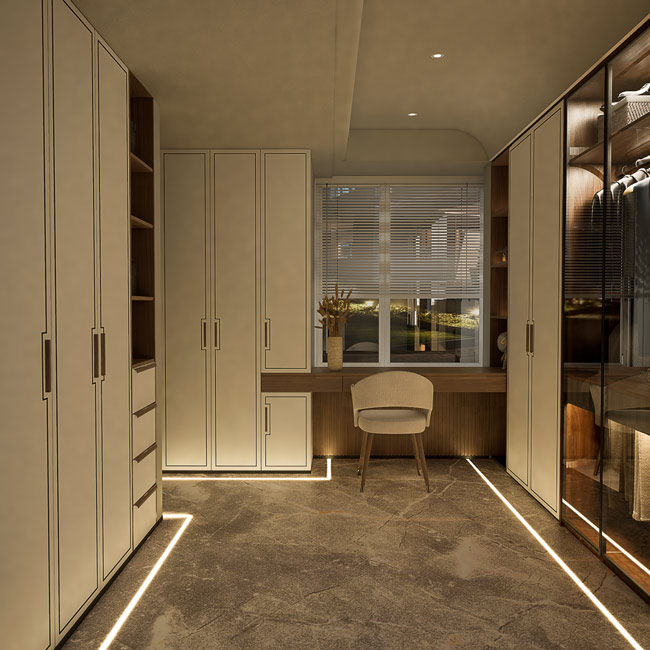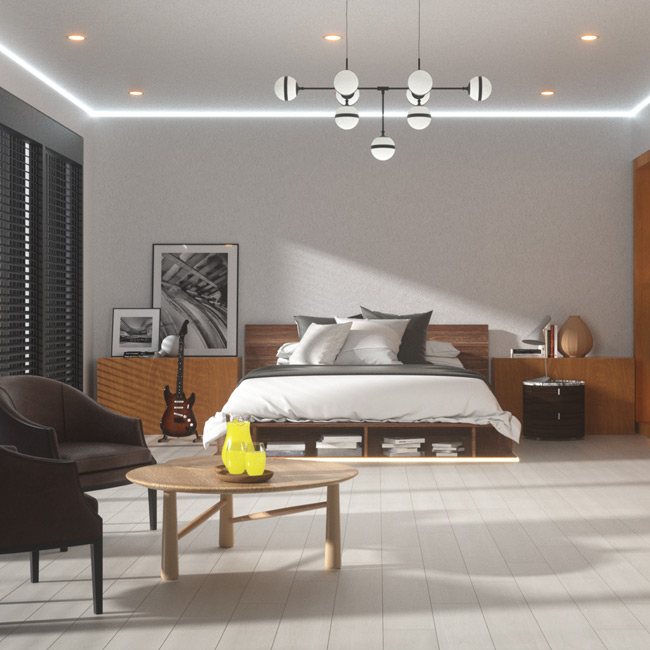Warm White Light VS Cool White Light: Find Your Perfect Light
Understanding Color Temperature: The Basics
When choosing light bulbs or LED lighting, you’ll often see references to “warm white light” or “cool white light.” These terms refer to the color temperature of the light, which is measured in kelvins (K).
Color temperature indicates the hue of a specific type of light source. Lower color temperatures produce warmer, more yellowish light, while higher color temperatures yield cooler, more bluish light.
For example, an ordinary incandescent light bulb emits a warm, cozy light at around 2700K. Compare that to the bright, bluish light of a clear sunny day at around 5500K.

So in simple terms:
Warm white light is more yellow/orange (2700K-3000K)
Cool white light is more blue/white (3500K-5000K)
Table of Contents
What Is Warm white Light?
What Is Cool white Light?
Warm white Light VS Cool white Light
Best Light Color Recommendation
Bonus Tips: How to Choose the Best LED Light
Conclusion
FAQs

What is Warm White Light?
Warm white light and LED channel produce a soft, inviting glow that feels cozy and natural. The yellowish hue is reminiscent of incandescent lighting and resembles the warmth of a fireplace or candlelight.
With a color temperature of 2700K-3000K, warm white light creates an intimate ambience perfect for living rooms, bedrooms, and other relaxing spaces. It’s ideal for the evenings when you want to wind down and get ready for bed.
Warm white lighting is recommended where the mood and atmosphere are important, such as restaurants, hotels, and spas. The warmer tones make people feel comfortable and relaxed.
What is Cool White Light?
Cool white light has a bright, energizing effect that helps improve alertness and productivity. With a higher color temperature of 3500K-5000K, it mimics natural daylight more closely than warm white light.

The whiter or bluer tones of cool white lighting keep people focused and attentive, making it well-suited for tasks like reading, working, cooking, and applying makeup. It’s commonly used in offices, classrooms, kitchens, and workspaces.
While cool white light has some beneficial effects on concentration and energy levels, it can also feel a little harsh at times. That’s why many people prefer it during the day but switch to warmer lights in the evening.
Key Differences Between Warm vs Cool White Light
- Appearance: Warm white light is yellowish, while cool white light is whiter/bluer
- Temperature: Warm is 2700K-3000K, cool is 3500K-5000K
- Mood: Warm white light is cozy and relaxing, cool white light is energizing
- Uses: Warm white light works best in living rooms and bedrooms, cool white light is better for kitchens, offices, work areas
- Time of day: Warm white light is preferred at night, cool white light is preferred during the day
- Energy Efficiency: Due to the physics of producing warmer light hues, which slightly reduces energy efficacy, cooler LED lights are typically slightly more energy-efficient than warmer ones.
- Color Rendering Index (CRI): Cool white light generally has a higher CRI, which means it represents colors more accurately. (Studio, retail store or kitchen)

Best LED Lighting Color Temperatures
So when choosing LED channels or strips, which color temperature is the best option? Here are some recommendations for different rooms and uses:
| Application scenarios | Color Temperature | Uses |
| Living Rooms | 2700K-3000K warm white light | creates a cozy ambience for evenings and relaxation |
| Kitchens | 3000K-4000K neutral white light | provides good visibility for cooking tasks without feeling too cold |
| Offices & Workspaces | 3500K-4000K cool white light | helps keep people alert and focused during the day |
| Bathrooms | 3000K-5000K neutral to cool white light | works well for task lighting in bathrooms |
| Outdoor Lighting | 4000K-5000K cool white light | helps improve safety and visibility outdoors at night |
How to Choose the Best LED Lights
Here are a few tips for choosing flattering, eye-comfortable LED lights:
- Match lighting color to the room function and time of day it will be used.
- Look at the lumens rating to determine if the LED is bright enough for the intended space.
- Check for Energy Star certification to ensure it meets efficiency and quality standards.
- Choose options with a CRI (color rendering index) of 80 or higher for the most natural light.
- Look for LED lights and fixtures with built-in dimming capabilities. This allows you to easily control the light brightness.
- Pay attention to the beam angle (how focused the light is). Wider beam angles (100°- 120°) are better for ambient lighting.
There are good reasons to choose both warm white and cool white LED lighting. The key is picking the right color temperature for your space, mood, and activities. Warm white light creates coziness, while cool white is clarifying. With the right LED lights, you can enjoy the perfect lighting for any task or relaxation need.
FAQS
A1:Is Warm or Cool White Light Better for The Eyes?
R1: The ideal lighting for eye comfort isn't a simple case of warm versus cool light. It often depends on the task at hand and the individual's sensitivity. However, prolonged exposure to excessively bright cool light, especially at night, may cause eye strain for some people.
A2:Why Does Warm White Light Look Better?
R2: Many people find warm light more visually appealing because it mimics the hue of natural evening light, creating a cozy and comforting environment. It casts softer shadows and is often more flattering to skin tones, contributing to its perception as "looking better."
A3:Should I Have Warm or Cool White Light at Night?
R3: It depends on where you want to use it. Generally, warm light is recommended for nighttime use in the bedroom as it encourages relaxation and sleep. For outdoor nighttime use, you may be better off with cool, brighter lights that illuminate the surroundings better and improve security.
ABOUT THE AUTHOR




